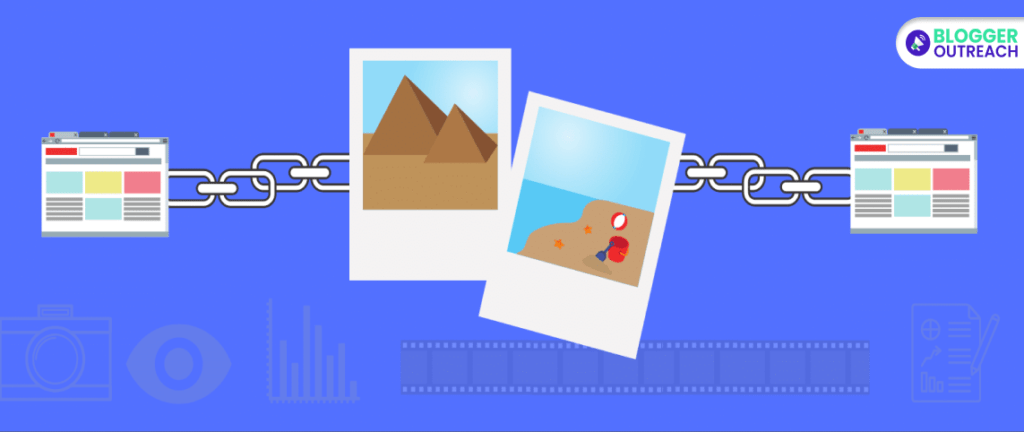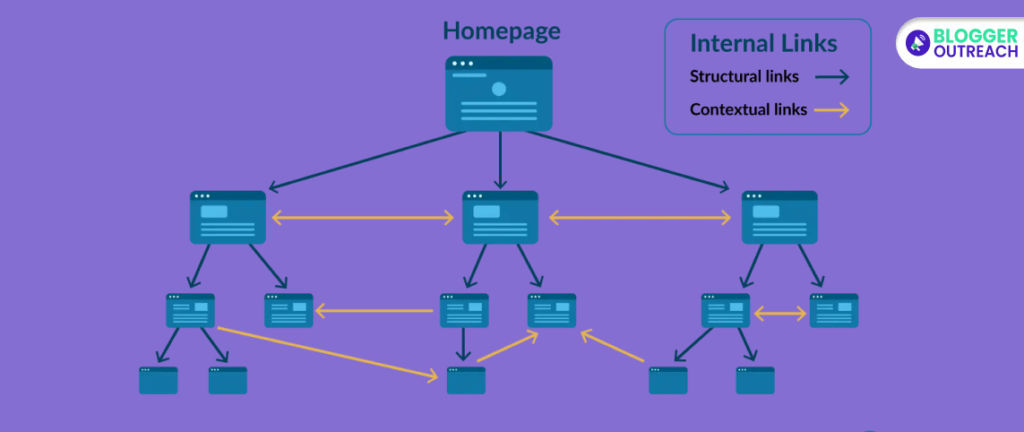Table Of Content
- 1 Here Is What John Mueller From Google Said About Good Links
- 2 What Is Link Spam? What To Avoid In White Hat SEO Link Building? (Google’s Stance)
- 3 Why White Hat Link Building Matters?
- 4 10 White Link Building Strategies That Google Will Love
- 4.1 1. Guest Posting
- 4.2 2. Statistical Content Skyrocket Your White Hat Link Building Efforts
- 4.3 3. Create Linkable Assets For White Hat Link Building
- 4.4 4. Visual Link Building
- 4.5 5. Broken Link Building
- 4.6 6. Link Reclamation For White Hat Link Building
- 4.7 7. Link Insertion (Niche Edits) For White Hat Link Building
- 4.8 8. Resource Page Link Building
- 4.9 9. Internal Link Building
- 4.10 10. Local Link Building
- 5 Frequently Asked Questions (FAQs):
- 6 Need Further Help? Opt For White Hat Link Building Services
It’s a legit and ethical way of acquiring backlinks that follows all the rules set by search engines. Here you follow means that don’t violate search engine’s guidelines.
So, imagine you have a fantastic blog post about the best hiking trails.
Now, white hat link building is when other websites (say, a popular outdoor gear blog or a hiking enthusiasts forum).
Find your article valuable and decide to link to it from their own pages. It’s like they’re giving your post a virtual thumbs-up, saying, “Hey, this content is awesome!”
But here’s the thing – white hat link building isn’t about quantity alone. It’s like building your house on a shaky foundation if you get backlinks from sketchy websites or use shady tactics. Eventually, search engines catch on, and your website’s credibility takes a hit.
So, What’s the best way to do white hat link building? How do you do it the right way? This article will help you out.
But first, let’s see how Google sees link building.
Here Is What John Mueller From Google Said About Good Links

When it comes to links, Google doesn’t just count the number; it values quality and relevance.
According to John Mueller, Google’s systems don’t differentiate based on link quantity.
Don’t be fixated on the total number of links to your site or domain, says Mueller. For Google, links are viewed in a unique way, making quantity less significant.
What matters most to Google is relevance when considering links for a website. The individual value of each link is carefully weighed to determine its importance.
There’s not much impact in a bunch of links on multiple websites.
Rather, a single, powerful link from a highly relevant source can be crucial.
For example, consider a significant link from a big news site’s homepage.
For Google, the total number of links is practically irrelevant compared to relevance. Creating millions of links won’t necessarily boost your website’s ranking.
Instead, focus on obtaining authoritative and relevant links to improve your site’s visibility.
Keep in mind Google has algorithms that can detect manipulative link building tactics.
So, it’s best to focus on natural link building and providing valuable content for users.
What Is Link Spam? What To Avoid In White Hat SEO Link Building? (Google’s Stance)
So, what exactly is link spam, according to Google? Well, in simple terms, it’s any sneaky tactic or manipulation of links to boost a website’s rankings in search results artificially. In other words, it’s the dark side of link building.

Buying or selling links for the sole purpose of manipulating rankings is an example of link spam. It’s a risky game that isn’t worth playing. Google takes a strong stance against it and can penalize websites that engage in it.
Even sending products in exchange for a link is banned by Google. Though it might seem creative, Google is always one step ahead of you!
If you’re tempted to create a partner page solely for the purpose of cross-linking, think twice about it.
Using automated link-building programs might seem like a time-saver, but Google’s algorithms can detect these spammy practices, and the consequences can be severe.
In order to rank well on Google, you have to ensure that third-party sites link to you organically, naturally, and based on the merits of your content.
Text advertisements or links that don’t block ranking credit might seem like a clever way to get noticed, but Google’s algorithm is smart enough to sniff them out.
It’s also a good idea to avoid advertorials and native ads with paid links that pass ranking credit on to you.
Low-quality directory or bookmark site links won’t do you any favors either. If a link is buried among irrelevant or spammy websites, it’s likely to be seen as suspicious.
We don’t want Google’s links hiding in the shadows, but we do want them to be transparent and relevant.
Participating in discussions is good, but spamming forums with irrelevant links is ineffective and frowned upon by Google.
Why White Hat Link Building Matters?
White Hat Link Building techniques adhere to search engine guidelines. It helps your website establish credibility and trust with search engines like Google. This can lead to better rankings and increased visibility.
Search engines penalize websites that engage in Black Hat or spammy link building practices. By sticking to White Hat methods, you avoid search engine penalties that can harm your rankings and reputation.
White Hat Link Building prioritizes quality over the sheer number of links. Each link earned through legitimate means carries more weight and contributes to your website’s authority.
Getting linked to reputable sites ensures that both search engines and users know that your site is a reliable source of information. This helps establish your authority within your niche or industry.
High-quality backlinks from relevant sources can bring direct referral traffic to your website. Users clicking on these links are more likely to be genuinely interested in your content or products.
Link placements on reputable sites can introduce your brand to a broader audience. It creates brand awareness and exposure to potential customers.
White Hat Link Building often involves outreach and relationship-building with other website owners and influencers. This can lead to partnerships and collaborations beyond just link placements.
Quality link building often leads to a better user experience. If you provide valuable content, they trust your site, and they stay longer with you.
Search engine algorithms are continuously evolving to prioritize user satisfaction and quality content. White Hat Link Building aligns with these changes, ensuring your website remains relevant and adaptable.
In a competitive online landscape, employing ethical link building strategies can give you an edge over competitors who might resort to spammy practices.
10 White Link Building Strategies That Google Will Love
White hat link building comes with proven strategies. Here is how you can start with white hat link building.
1. Guest Posting

Guest blogging for successful link building that involves writing for fellow sites and getting links from them. It requires following the correct guidelines. Be selective about where you pitch, and focus on authoritative sites within your niche.
Then, Craft a personalized and compelling pitch, tailored to the specific site and person you are contacting. Building relationships with real people and forming lasting ties is crucial in guest blogging.
What’s more? Here are the things that you can follow:
Review the site’s performance, including social followers, industry leadership, and engaged readers. Ensure you get a featured bio with a byline, headshot, and link to your site.
Pay attention to guidelines when pitching to avoid having your pitch deleted without being read. Be direct and concise when reaching out to the owner or editor of a blog to show that you value their time.
When writing a guest blog, address the audience’s needs to attract more readers. Create attention-grabbing headlines that promise valuable content to engage readers.
Dive deep into your content to show authority and expertise. Support your claims with credible sources and provide further links for readers to explore.
Create an interesting angle by thinking outside the box and writing uniquely. Keep your content benefit-oriented, listing at least six benefits readers will gain. Divide your blog into sections, use visuals, and keep paragraphs short.
Funnel your readers to a specific outcome by strategically choosing the link in your biography section. Avoid linking to the homepage and focus on achieving a particular goal.
Choose the best way to promote your product or service, and link to it. Respond to comments in your guest posts to increase conversions.
Finally, utilize tools like BuzzStream, BuzzSumo, and Alexa to enhance your guest blogging efforts.
2. Statistical Content Skyrocket Your White Hat Link Building Efforts

Top white hat link building experts are advocates of statistical content.
As a result, your statistical content is more likely to be shared and linked to by others, resulting in more backlinks.
Organically ranking for keywords related to your statistical content increases your chances of attracting your target audience, which leads to more shares and backlinks.
A great way to create content that resonates with your audience is to understand them.
White hat link building is all about originality. Generate unique and credible data and become the authority in your niche.
Now, that you understand the importance of statistical content,
Here Are Some Tips For Creating Backlink-Friendly Content:
- Gather data from a variety of sources, including website analytics, social media insights, customer data, LinkedIn polls, expert interviews, and market surveys. The more diverse and unique your data is, the more appealing it will be.
- Make your data appealing with infographics. Use branded colours and user-friendly designs to keep your audience engaged and encourage them to share.
- Recruit credible subject matter experts to co-create statistical content. When you involve experts, you’ll get backlinks and exposure from their networks.
- Invest in a paid boost at the beginning when your organic rankings aren’t yet established. This will help your content gain initial backlinks and attract organic links later.
- The most important thing is to make high-quality, authoritative content. If your content offers real value to your audience, it will naturally attract backlinks from other sites.
3. Create Linkable Assets For White Hat Link Building

Creating linkable assets can reduce outreach time and earn links without direct outreach, despite being time-consuming to develop.
You can tailor Linkable content assets for specific link-building techniques or audiences or create for a general niche.
The content-first strategy involves creating content and then finding links for it, using techniques like SME focus groups and content syndication.
Types of assets for securing links include Statistical Roundup Lists, Unique Research Studies, and Listicles of Companies, Tools, or People.
Statistical Roundup Lists involve aggregating statistics from reputable studies and organizing them into categories.
Unique Research Studies are original studies with methodology and insights published in a blog article or webpage.
Listicles are articles in bullet or numbered list format, providing quick and relevant information.
Informative infographics are visual representations of complex information, using charts, graphs, icons, and text to convey data quickly and clearly.
Excel & Google Sheets templates are valuable tools for organizing projects with many moving parts, popular in various industries, including project management.
Planning tools, calculators, and checklists serve as online assets that can attract links and build trust with the audience.
4. Visual Link Building

Google’s focus on visual content in search results means adapting how website information is presented.
Types Of Visual Content For Link Building:
- Infographics
- Logos
- Product photos
- Brand photoshoots
- Company/employee photos
- Illustrations
For link building, use high-quality, original visual content and ensure proper optimization for SEO. Use high-quality images and ensure accuracy in employee names. Utilize statistical charts, graphs, and maps for data visualization and link generation.
How To Do It Correctly?
- Incorporate memes and GIFs tastefully to encourage sharing and inbound links.
- Select creative stock photos that are relevant to your content for link building.
- Optimize images for SEO by adding descriptive captions, using keyword-rich file names, and including alt text.
- Image alt text with relevant keywords can boost site rankings and associate the site with those keywords and descriptions.
- If your images are being used without proper attribution, use reverse image search tools to find them.
- Adding visual content to your articles clarifies and enhances your message, which leads to more links and higher rankings.
5. Broken Link Building

Broken links are links on websites that lead to non-existent content, causing a poor user experience. The value in broken link building lies in offering webmasters a replacement for the broken link, helping improve their site quality.
Broken link building starts with finding relevant broken links is relatively easy – making broken link building a scalable approach.
Start by running backlink checks on websites and competitors in your niche to find broken links. Use tools like Ahrefs to identify broken links on popular websites like HubSpot.
Scraping resource pages using specific search terms can also help find relevant broken links to pursue. Use outreach to ask webmasters to replace broken links with links to your own website. Tools like Ahrefs’ Site Explorer, Screaming Frog, and Moz’s Link Explorer can aid in finding broken links on websites.
In light of the fact that webmasters know how to use such tactics, sending scalable and generic outreach emails isn’t likely to work. Build a rapport with the webmaster, and don’t ask for a link right away. Don’t use generic email addresses. Make outreach emails simple, honest, and straightforward to get a link.
When reaching out to webmasters and receiving positive responses, express gratitude and offer something valuable in return.
Before contacting webmasters, research their interests and social media to establish common ground, making the outreach more personal and engaging.
Build broken links to get relevant links fast. Be friendly, helpful, and approachable in webmasters’ inboxes.
6. Link Reclamation For White Hat Link Building

Link reclamation involves finding and fixing improperly linked content related to your brand or company. Unlinked mentions are references to your brand that aren’t linked to your website.
So, how to initiate the process?
Start by finding broken internal links on your site using tools like Google Analytics or Screaming Frog’s SEO Spider.
You can export a long list of URLs with 4xx codes as a CSV file. Fix broken internal links on your website by updating or replacing URLs.
Finding and reclaiming lost or broken backlinks is the next step, using tools like Majestic, Ahrefs Site Explorer, or Free Backlink Checker.
Reach out to site owners to provide them with the correct links for reclaiming lost external backlinks. Use reverse image search tools like TinEye or Google Images to find images with unclaimed mentions and broken backlinks. Contact site owners to fix them.
7. Link Insertion (Niche Edits) For White Hat Link Building

Link insertion is a link placement strategy for other relevant content and getting a link back to your site. The backlink profiles of potential link targets can give you insight into how to build links.
Here, selecting accurate and relevant anchor text enhances user understanding and the search engine’s understanding of the article.
So, get in touch with website owners and ask them to link to your content. Don’t use generic anchor text like “click here“.
Furthermore, build relationships with other website owners to build links and collaborate. Keep track of your SEO efforts.
Keep an eye on keyword rankings, organic search traffic, engagement metrics, and lead generation data. Regularly monitor and assess the quality and relevance of backlinks to avoid Google penalties.
Looking at Majestic, you can tell if a website is trustworthy and authoritative. A competitor’s keyword ranking, backlink profile, and content strategy can greatly improve SEO success.
With link insertion, you can increase site traffic by linking to relevant and valuable content on other websites. Link insertion can be combined with other link-building strategies for a comprehensive and effective campaign.
It depends on the campaign’s size and complexity, but generally, link insertion is faster than creating new content. It takes time to build relationships and links, but it’s worth it in the long run.
Common Mistakes To Avoid In Link Insertion:
- Not properly researching and choosing websites for link insertion.
- Engaging in direct link exchanges can be seen as a link scheme by Google, leading to penalties.
- Failing to track and analyze link insertion results, hindering optimization efforts.
- Inserting too many links too quickly can harm a website’s reputation.
How To Find The Right Websites For Link Insertion:
1. Research and analyze websites with relevant content and a strong online reputation.
2. Consider the website’s content relevance, quality backlink profile, and traffic.
8. Resource Page Link Building

Resource page link building is a method of link building that involves:
- Finding resource pages related to your niche.
- Improve those resources with your content.
- Getting a linkback from these.
In fact, the skyscraper technique works well here. The three core principles of the “skyscraper content” approach are:
- Find popular linked content.
- Create even better content on the same topic.
- Promote it to the right audience and acquire backlinks.
Here Is How To Do It:
Step#1 – Improve content by using the “skyscraper technique” and creating better versions of existing content.
Step#2 – Find resource pages in the industry using specific search queries and competitor analysis.
Step#3 – Conduct email outreach to share the killer content with the identified resource pages. Identify the right person to email by doing investigative research.
Step#4 – Personalization matters a lot here. Personalize the email with the recipient’s name, title, and a touch of personality. Clearly explain why your content would be valuable for their resource page.
Lastly, offer solutions like pointing out broken links and providing anchor text for easy linking.
9. Internal Link Building

Internal links allow you to distribute link equity within your website, benefiting other pages and improving their authority and trust. Lower-funnel pages that are hard to get external links can benefit from them.
How to make internal links properly? Internal links should be relevant and contextually make sense on the page they are placed. They can be used to signal and highlight your most important pages to search engine crawlers.
Consider using tools like Screaming Frog to analyze your internal linking structure to implement successful internal link-building. Then, identify link building opportunities by filtering pages with specific terms.
Now, click on Configuration, Custom, and Search to access the Custom Search menu.
Use Custom Search to find pages that include a specific term and export the URLs to Excel.
Moreover, tools like Majestic, Moz, and Ahrefs can aid in identifying pages with the most external backlinks for internal link building. Optimize anchor text for internal links, favoring clear and specific language related to the linked content.
However, try to avoid overdoing internal link building; use discretion and link where it benefits the reader’s experience on the page. Aim for around five to ten internal links on a page, depending on its length.
10. Local Link Building

So, how is the article going so far? We have reached the last point – which is local link building.
Here you try to acquire links from local sites. How to move forward with this?
Ahrefs site explorer Use the tool to find websites linking to your competitors but not to you, particularly directories with business data.
Reclaim lost links by redirecting old pages to current versions using the “Best by Links” report and a “404 not found” filter.
You Can Further:
- Create locally relevant content to attract your target audience and potentially build links.
- Get local citations from services like Data Axle, Localeze, Foursquare, Google My Business, Bing, and Apple Maps.
- Pursue other local link opportunities from sources like colleges or universities, city-specific sites, and directories.
- Utilize local news, magazines, podcasts, and community groups (e.g., Reddit and Facebook).
- Consider sponsoring events and local charities to gain recognition and aim for local awards.
- Use testimonials, case studies, and connections through churches or business groups.
- Identify and reach out to sites that mention your company without linking back.
- Look for opportunities to buy out local companies or their websites for potential ranking benefits.
Frequently Asked Questions (FAQs):
Let’s get straight to the point with the most sought-after questions…
A: White hat link building is a process of building links to a website through ethical practices. Here you follow all the policies set by Google and build links through high-value content.
A: Steps to make white hat backlinks.
1. Focus on high-quality content that naturally attracts links.
2. Engage in guest posting on authoritative websites.
3. Build relationships with industry influencers for organic backlinks.
A: Top 3 white hat link building methods:
1. Guest Posting: Creating valuable content for reputable sites in your niche.
2. Content Outreach: Reaching out to relevant sites with quality content to earn backlinks.
3. Broken Link Building: Finding broken links and offering replacements with your high-quality content.
A: White hat is ethical, earning backlinks through quality content and outreach. The black hat uses manipulative tactics, risking penalties. White hat link building takes time and effort but pays off in the long run. Black hat link building may bring short-term success but is not sustainable.
Need Further Help? Opt For White Hat Link Building Services
Hey, SEOs, publishers, and agency owners! Have you understood how white hat link building work? Do you need personalized guidance to achieve your desired goal?
Choose BloggerOureach! Get white hat backlinks and grow your rankings, traffic, and overall digital presence.
Why Do Top Brands Rely On Us For SEO And Backlinks?
- Ethical Approach (White Hat Practices): We ensure your website’s long-term success and avoid any penalties from search engines.
- High-Quality Niche Backlinks: Authoritive backlinks gives your site greater authority and boost your SEO rankings.
- Every Step We Take is Inclined Towards Your Business Growth: Our methodology is intended for your business growth (higher ranking, more traffic, and more business growth).
- Industry Recognized Professionals: Our SEO experts can craft link-building strategies tailored to your needs.
- Transparency: We believe in complete transparency and provide regular updates on the progress and results of your link building campaigns.
- Impressive ROI: With improved rankings and increased organic traffic, you’ll experience a remarkable return on your investment.
- Expert Content Team: Our expert niche writers produce content (keeping E-E-A-T in mind) that speaks directly to the audience. By doing so, you are more likely to get quality links.
- Indexed URL (Dofollow): We do not believe in any shady practices. Whatever links you get from us are permanent and indexed. These links come with a dofollow tag that passes authority and link juice.
Want to know more? How about a one-to-one discussion with our outreach expert? Yes, that is possible. Book a strategy call with our outreach expert and ask anything you’re unsure about.
Read Also:








